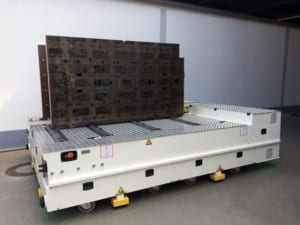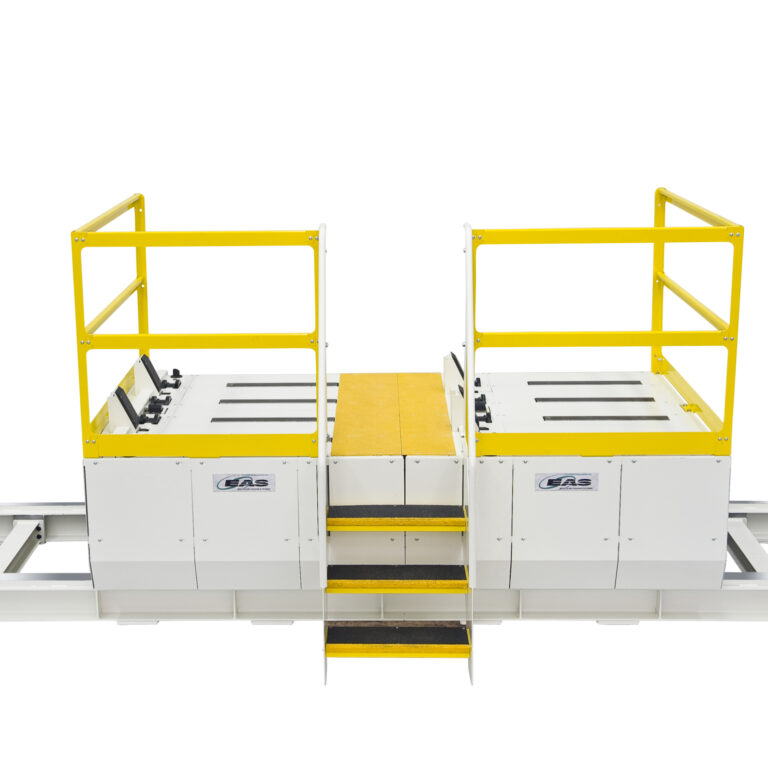Lean Manufacturing – Just in Time is key
To stay competitive, production companies focus more and more on high-mix/low-volume production. The combination of low-volume and long lead times is undesirable. This means production needs to be automated. Lean manufacturing offers smart solutions for different stages of the production process. To achieve short lead times, reduce stocks, and still deliver just in time.
Changeover times are an important aspect. Being able to change production from one product to the next in the shortest possible time helps reduce overall costs. Many of the methods used in lean manufacturing have been invented in the Toyota-ranks. Shigeo Shingo devised SMED, Single Minute Exchange of Dies. A quick and efficient way for the changeover, including all activities concerned. According to his principle, a changeover should take less than ten minutes, hence the ‘single-minute’. In metalworking, this applies to stamps or dies, in injection molding we should be referring to the method as SMEM, as it applies to Single Minute Exchange of Molds.
Development
Vincent Nijzink is head of EAS Change Systems. His company was founded thirty years ago by his father, who started developing systems that enable short changeover times. “In Japan, there were companies doing just that, but in Europe, this was an untrodden territory.” Vincent Nijzink explains all this in his office at the headquarter of what is now a globally active company.
“In the very beginning, my father had talks with the Volkswagen engineers and noticed a clear need for these systems. A student working for us came up with the idea to make wedge-shaped clamps with an angle of 5 degrees, making them self-locking. That struck a chord. But we didn’t stop there, we wanted to consider the whole changeover procedure since clamping a mold or die is only a small part of it. The actual changing process itself, the ejectors and with injection molding the cooling system, and the preheating of the mold need to be considered. Before we even had one finished product, we had written our first orders for them.” Nijzink shows us the first brochure the company ever published. “It is quite remarkable to see it contains only ideas, but now, looking back at it, all these ideas have turned into products.”
Mentality change
Even though the principle has been around for a few decades now, Nijzink notices many companies still need convincing in regard to the benefits of the quick-change systems. “We see lots of production companies happy to buy a new machine when their machine efficiency is at seventy percent. These systems could help them raise that to over ninety percent, making the extra machine in many cases superfluous.” He laughs and continues: “We have a running gag for the abbreviation QMC, people need a Quick Mentality Change. There are many factors to take into account when deciding on either option. Many companies do not even consider calculating an ROI, they find that too much trouble. They just assume it is too expensive. The benefits can go much further than just not having to buy an extra machine. The costs of stock can be reduced immensely. And besides that, they often forget how valuable their tools are. A mold or die can be a very expensive piece of equipment. Taking care of that can prolong the lifespan, but can also increase the quality of the product along with that lifespan. That last aspect is an absolute must for some industries. And apart from all that, you can choose how automated you want your systems to be. Just a little or very advanced, the choice is there to make.”
Nijzink gives us an example: “an extreme one: a bumper for an automobile. The mold for this part weighs 40 tons. With conventional methods, changeover would take six to eight hours. With a QMC system we have reduces it to less than two minutes! In the past, there was only one changeover per month, now they can do that several times per day if needed. For a very large mold, we built a changeover system on a hovercraft. The hovercraft with the mold can be driven into an inspection unit. Allowing for easy maintenance and repair and constant high-quality output of the mold. The bigger the mold, the bigger the time gain.”
 Advanced automation
Advanced automation
According to Nijzink, in the nearby future, many more companies will be focusing on shortening lead time. “Automation allows us to be competitive in production. We see tools being equipped with RIFD chips that store valuable cycle data. Control systems for the automated change systems are already often being integrated into the machine control. And I think we will see robots changing tools with AGV’s, self-driven change tables, bringing the right tool to the right machine at the right time. Pre-heated if needed. Thanks to the RFID chip, the machine recognizes the tool and automatically sets the correct parameters.”

 Advanced automation
Advanced automation
No comments